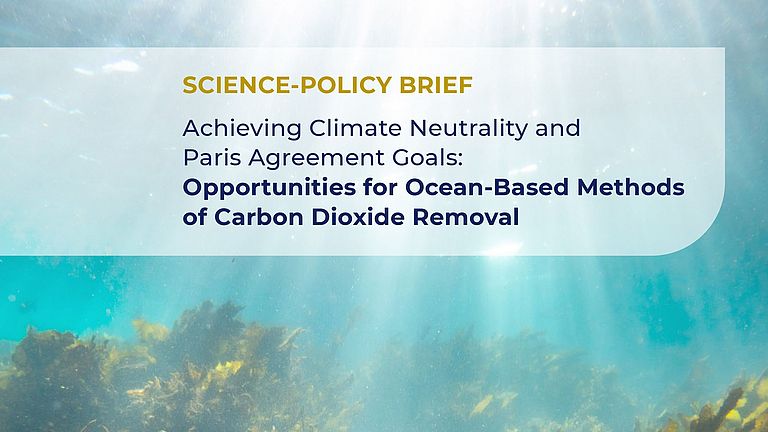Achieving climate neutrality and the goals of the Paris Agreement
OceanNETs and CDRmare discussion at the European Parliament and Online
Even with ambitious climate policies, humanity is expected to continue releasing carbon dioxide (CO2), further driving global warming. One solution to reach climate neutrality and limit global warming as laid out in the Paris Agreement is to compensate these residual emissions by targeted carbon dioxide removal (CDR) and storage measures. Many carbon dioxide removal processes investigated to date are land-based. However, ocean-based approaches and processes are being increasingly explored.
An event organized by the European Union’s project Ocean-based negative emission technologies (OceanNETs) and the research mission of the German Marine Research Alliance (DAM) “Marine carbon sinks in decarbonisation pathways” (CDRmare) at the European Parliament and online on Tuesday, 25 October 2022, addresses opportunities for ocean-based methods of carbon dioxide removal. The event is supported by the European Parliament Intergroup on Climate Change, Biodiversity & Sustainable Development. In preparation of the event, the two involved research projects published a policy brief.
Because of its large natural CO₂ uptake capacity, the ocean is the major player in the global carbon cycle. However, the uptake and subsequent storage of CO2 in the ocean and its seabed occurs on long time scales. Various approaches for ocean-based CDR could accelerate such processes and thereby increase the ocean’s CO₂ uptake and storage rate.
Research on CDR approaches needs to take on a holistic perspective, the authors of the policy brief explain. The choice of solutions in the fight against climate change must be negotiated politically and in society in an open debate – considering social and political acceptance, affordability, societal impacts as well as possible risks and co-benefits, or implications for governance and politics. Starting from an overview of residual emissions and the role of CDR, the new policy brief addresses the role of Earth system models and experiments, governance and legal considerations as well as economics and carbon accounting.
“We expect a valuable contribution of some ocean-based CDR approaches to help fight climate change – but we are also very much aware of their controversial aspects. This is why we hope for a fruitful discussion around the societal, environmental, economic, and political implications of CDR methods, as well as important, necessary directions”, says Dr. David Keller, project coordinator of OceanNETs.
Andreas Oschlies, CDRmare co-chair, adds: “Our aim is to enhance the science-policy dialogue towards a carbon roadmap in line with our climate targets, and provide scientific underpinning for political processes, agreements and regulations, such as the national Climate Protection Plan 2050, the COP27 negotiations and the European Commission’s initiative on certification of carbon removals.”
Event:
“Achieving climate neutrality and the Paris Agreement goals: Opportunities for ocean-based methods of carbon dioxide removal (CDR)”, Tuesday 25 October 2022, 12:00 – 14:00 CEST, hybrid event at the European Parliament, Room ASP 5G1 and online. Further information is available on the event website.
Policy Brief:
David Keller, Sandra Ketelhake, Judith Meyer, Barbara Neumann, Andreas Oschlies, Alexander Proelß and Wilfried Rickels (2022): Achieving Climate Neutrality and Paris Agreement Goals: Opportunities for Ocean-Based Methods of Carbon Dioxide Removal, Science Policy Brief, DOI: 10.3289/cdrmare.oceannets_1



